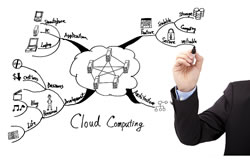On April 19, 2011, Sony experienced a nightmare of a security breach. What began with a few Sony PlayStation Network (PSN) servers unexpectedly rebooting themselves has resulted in a blemishing of the Sony brand and the loss of some major bucks.
 The company was forced to shut down its entire online video game network, as well as the PlayStation store, after discovering that the breach had compromised the personal (and possibly financial) data of some 77 million PSN users. This user data may have included: contact details, purchase history, PSN passwords, security questions and answers, as well as any other information submitted to PSN during signup or account history. According to the Ponemon Institute’s analysis of the PSN Breach, at an average cost of $318 per account, the loss to Sony could reach up to $24.5 billion. That’s quite the hacker heist.
The company was forced to shut down its entire online video game network, as well as the PlayStation store, after discovering that the breach had compromised the personal (and possibly financial) data of some 77 million PSN users. This user data may have included: contact details, purchase history, PSN passwords, security questions and answers, as well as any other information submitted to PSN during signup or account history. According to the Ponemon Institute’s analysis of the PSN Breach, at an average cost of $318 per account, the loss to Sony could reach up to $24.5 billion. That’s quite the hacker heist.
Adequate Security Required—Regardless of Cloud Computing Platform
Cloud computing networks—especially ones as popular at the Sony PSN—are prime targets for hackers. Without a doubt, this incident coupled with Amazon’s recent cloud outage puts into question the state of cloud computing security. While we may not know exactly how the PSN cloud is architected, we can still wonder whether or not Sony did all it could to satisfy security and PCI- compliance requirements. Did the company follow security best practices? Do you?
As a general rule of thumb, to stay safe and remain PCI-compliant in both physical and virtualized environments, companies should implement solutions that can:
• Constantly monitor cloud resource use (e.g., Administrators should be alerted when unplanned server reboots occur.)
• Log all access activity
• Scan allowed traffic for the presence of malware and indications of an attack pattern
• Block all unwanted traffic
• If virtualization is in use within the cloud – ensure that PCI VMs are well isolated from other VMs via the application of
• Continuously apply security throughout all changes to servers or VMs containing PCI data
• Alert security administrators of anomalous activity or VM security state/compliance state changes in real time
The Cost of Maintaining Security and Compliance
Sure, the maintenance of a massive infrastructure isn’t necessarily cheap, and adding adequate security measures to the mix may not lessen these upfront costs. However, with the flurry of recent data breaches, it’s looking more and more like long-run outlooks are what companies need to be taking in terms of security. And thanks to advances in the virtualized and cloud computing worlds, there are better ways to protect for less.
So then if you’re an enterprise, an online gamer or a cloud services provider, what kinds of questions do you need to ask to understand your security risks? While this isn’t a comprehensive list, it’s a good starting point:
1. What kind of cloud are you implementing/using? Public? Private?
2. What platform is the cloud running on? Virtualization? Dedicated physical resources?
3. What types of security protections are in place for: cloud user authentication, cloud user authorization (where he/she can go), cloud user resource isolation?
4. How can the effectiveness of the protections be shown or documented?
5. What kind of security is in place for cloud privileged users like administrators?
| Read Johnnie’s Other Featured Columns Here |
When it comes to any security—though especially cloud security—there are a lot of areas in which protections have to be applied. And while we may not ever know exactly what happened at Sony, we can conclude that the right way to reduce the chances of such a breach happening again is to install as many layers of access protection and traffic visibility as possible. After all, our appetite for cloud services isn’t going to wane anytime soon (PSN’s business now is as brisk as ever), but neither will the value of this type of network as a hacker target.













